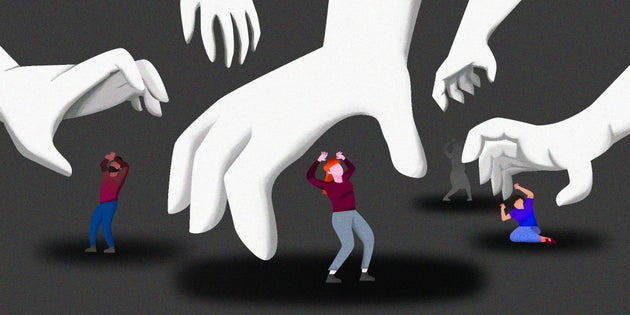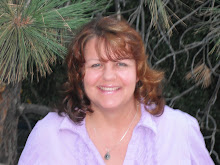- Transformational analogies in the Bible
- America's history of white supremacy
- White Trauma and denial
- Common Memory
Transformational analogies in the Bible
 |
| Graphic from Caterpillar Into Butterfly |
The Nicodemus encounter with Jesus where he's told in John 3:3:
"Jesus replied. 'Very truly I tell you, no one can see the Kingdom of God unless they are born again'" (NIV)
The Message Paraphrase puts John 3:3 this way:
"Jesus said. You're absolutely right. Take it from me: Unless a person is born from above, it's not possible to see what I'm pointing to - God's Kingdom"
This concept of being born again, coming into God's Kingdom and being transformed from a person living for the gods of this world into walking in God's ways, is a central theme in Christianity. Hill points out that it starts with seeing. I've typically thought about how I need to see God's ways, but Hill's encouraged me that I also need to see this world's ways so I can see the difference; and then God can work His change in me. There really are two kingdoms here and truly seeing helps me know what to do, where to go, to be able to live God's Kingdom life.
Only God can truly open my eyes to SEE; I'm continuing to seek Him in this journey.
This is the account of an incident that took place during the journey of the Israelites out of Egypt and to the promised land. The people were complaining about not having water, detesting the manna God was giving them, and speaking against God and Moses. God caused venomous snakes to come among them and bite and even kill some of the Israelites. Then the people came and admitted to their wrong doing and Moses prayed for them. God directed Moses to make a snake and put it on a pole and the people could be healed by looking at it.
Hill points out that the snake became a symbol of the trauma the people suffered due to their sin and, by looking at it, the people were healed. He continues the analogy, coupled with Jesus' words recorded in John 8:32 about knowing the truth and that setting you free, to say that we can be transformed only when we see the truth about our own sin. If we can't see our sin, we will continue in the bondage of our sin. If we can see the sin and repent, then we will allow God to do the transforming work of changing us from our sinful ways.
Jesus compares people who listen what He says and put them into practice to people who build their house on a solid foundation instead of on sand.
Hill talks about how our foundation matters. If our foundation is lies, then what can we build? What will we transform into? If our foundation is truth, then we can transform into God's Kingdom lives.
Being in Christ, and living in His Kingdom, requires that we leave behind the world's ways and step into His ways. The old is gone and the new has come.
This one is painful for someone like me to read and accept; but my heart knows the truth when I see it.
Hill goes through scores of historical events that demonstrate this; slavery, the one-drop rule, Jim Crow laws and lynchings.
In a sick way it is fascinating to consider what America did to make slavery "okay" in their minds. Since slavery couldn't be OK if we read the Bible and see that humans are created in God's image and are all valuable. Instead, the narrative that was created was that the black people were less than the white people. Hill points out that prior to this, the people coming to America did not initially think of themselves as white; they were British, French, German, Welsh, Dutch, Irish, etc. Because the way the economic system was designed there was a need for slaves, having a white race allowed for an Okay-ness to slavery. If the Europeans were seen as a superior white collective, then what they did to Native Americans and black slaves could be Okay.
The one drop rule was a legal principle that any person with even a drop of sub-Saharan African blood was to be considered black. The obvious message here was that white was the superior race and even a drop of inferior blood contaminated the purity of whiteness. There were even laws prohibiting marriage between whites and other races.
Jim Crow laws were constitutional provisions that mandated the segregation of public schools, public places, public transportation and public restrooms. Throughout America's history there were cases of people of color having the justice system by-passed and being hung (lynched) for perceived offenses; these events were so horrible that it is beyond comprehension that this could have happened in our country.
White trauma and denial
Hill quotes George Erasmus, and aboriginal advocate, saying that "Where common memory is lacking, where people do not share in the same past, there can be no community".This points to the fact that White denial of America's true history keeps Americans of all colors of having real community. Hill challenges " Will we continue to live in denial and allow our home to be built on the weak, foundation of myths, and half-truths? Or will we have the courage to live up to the truth and allow God's holy fire to burn down the old and erect a new home that can hold us all?" " Denial or truth? Sand or rock? Fear or courage? Let us boldly choose to follow the one who is Truth."
All of this is a LOT to take in. My mind is reeling and my heart is anguished. I'm praying that God would awaken me to truth and show me what this means in my every day life.
I find myself noticing things that people say and attitudes that people have that demonstrate white trauma. I try to gently interject truth into conversations while avoiding any kind of judgmentalism.
I've been thinking, the Holocaust museum in La and the Alcatraz tour/museum in the San Francisco Bay area, are both powerful experiences. We need these types of museums related to the American massacre of the Native Americans, Slavery, and Lynchings/mistreatment of people of color in our history. We need these places scattered across the nation to help us understand our history, move our emotions, and hopefully instill a desire in us to not repeat/continue this history. [Please note that this is not all I think we need, it's just one tiny thing that I think would be good.]
,
Hill goes through scores of historical events that demonstrate this; slavery, the one-drop rule, Jim Crow laws and lynchings.
In a sick way it is fascinating to consider what America did to make slavery "okay" in their minds. Since slavery couldn't be OK if we read the Bible and see that humans are created in God's image and are all valuable. Instead, the narrative that was created was that the black people were less than the white people. Hill points out that prior to this, the people coming to America did not initially think of themselves as white; they were British, French, German, Welsh, Dutch, Irish, etc. Because the way the economic system was designed there was a need for slaves, having a white race allowed for an Okay-ness to slavery. If the Europeans were seen as a superior white collective, then what they did to Native Americans and black slaves could be Okay.
The one drop rule was a legal principle that any person with even a drop of sub-Saharan African blood was to be considered black. The obvious message here was that white was the superior race and even a drop of inferior blood contaminated the purity of whiteness. There were even laws prohibiting marriage between whites and other races.
Jim Crow laws were constitutional provisions that mandated the segregation of public schools, public places, public transportation and public restrooms. Throughout America's history there were cases of people of color having the justice system by-passed and being hung (lynched) for perceived offenses; these events were so horrible that it is beyond comprehension that this could have happened in our country.
White trauma and denial
 |
| Graphic from Huffington Post
Trauma responses have been thought of as emotional responses. But psychologists have come to realize that Trauma happens in the body. It's a spontaneous protective mechanism used by the body to stop or thwart further/future potential damage.
"Trauma is not a flaw or weakness. It is a highly effective tool for safety and survival.
Trauma is also not an event. Trauma is the body's protective response to an event - or series of events - that it perceives as potentially dangerous.
An embedded trauma response can manifest as fighting, fleeing, or freezing - or as some combination of constriction, pain, fear, dread, anxiety, unpleasant thoughts, reactive behaviors, or other sensations and experiences. This trauma then gets stuck in the body - and stays stuck there until it is addressed. Our rational brain can't stop it from occurring, and it can't talk our body out of it" (Menakem, 2018).
"The attitudes, convictions, and beliefs of white-body supremacy are reflexive cognitive side effects, like the belief of a claustrophone that the walls are closing in. These ideas have been reinforced through institutions as practice, procedures, and standards" (Menakem, 2018).
Hill sets forth the belief that it is impossible to be complicit with centuries of traumatizing oppression without becoming traumatized oneself. He states that he believes that white trauma explains why otherwise logical people can come to illogical conclusions and live in denial about what goes on around them. He explains that denial is comfortable; I mean, who wants to deal with the fact that grandparents that they truly love and see as good people may also be racist? I have Hill's book in paperback as well as audible. Recently when I was in the kitchen cutting up vegetables and listening, my husband came in. It was during the part where Hill was relating the racist history of our country, and my husband commented that this was painful to hear, but that it's true.
After relating America's history of racism, Hill then goes back to look at how God is the God of truth and the enemy is the speaker of the language of lies. He brings in the Numbers 21:4-8 account and explains that God wanted the Israelites to look at that serpent, the symbol of their sin, for healing. He reminds us of how Jesus said in John 8:32 that truth sets us free.
He postulates that we won't be free to transform into disciples of Christ who participate in Kingdom living until we come out of denial and deal with our sin in this area.
Common Memory
|
 |
| Graphic from Pineterest |
All of this is a LOT to take in. My mind is reeling and my heart is anguished. I'm praying that God would awaken me to truth and show me what this means in my every day life.
I find myself noticing things that people say and attitudes that people have that demonstrate white trauma. I try to gently interject truth into conversations while avoiding any kind of judgmentalism.
I've been thinking, the Holocaust museum in La and the Alcatraz tour/museum in the San Francisco Bay area, are both powerful experiences. We need these types of museums related to the American massacre of the Native Americans, Slavery, and Lynchings/mistreatment of people of color in our history. We need these places scattered across the nation to help us understand our history, move our emotions, and hopefully instill a desire in us to not repeat/continue this history. [Please note that this is not all I think we need, it's just one tiny thing that I think would be good.]
,













No comments:
Post a Comment